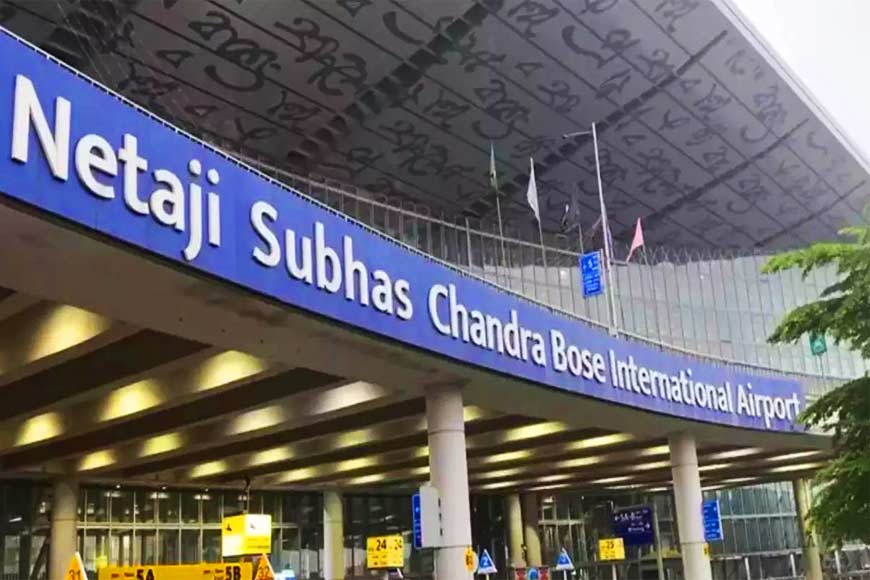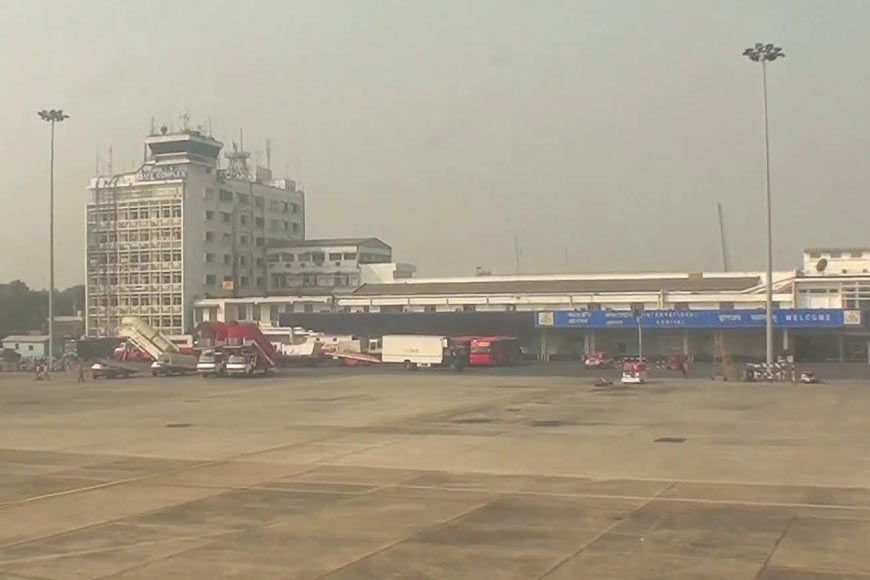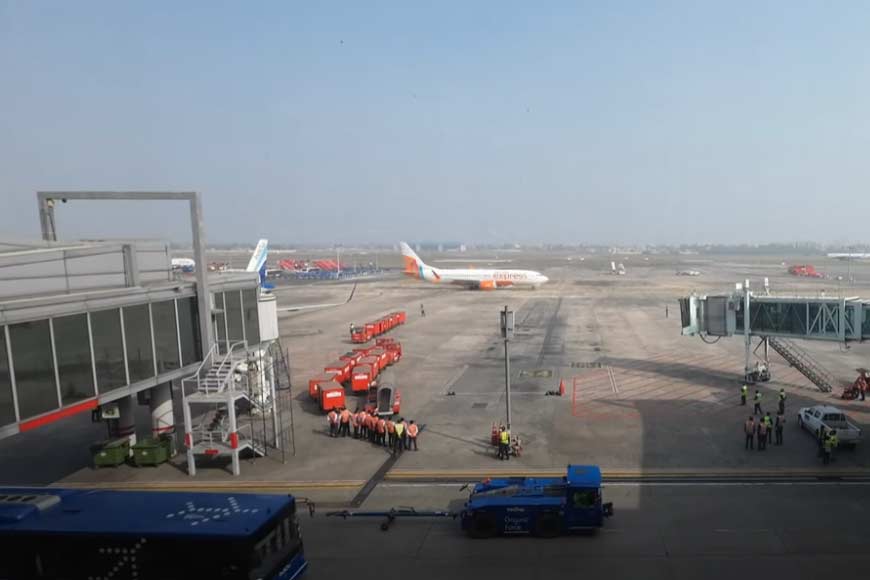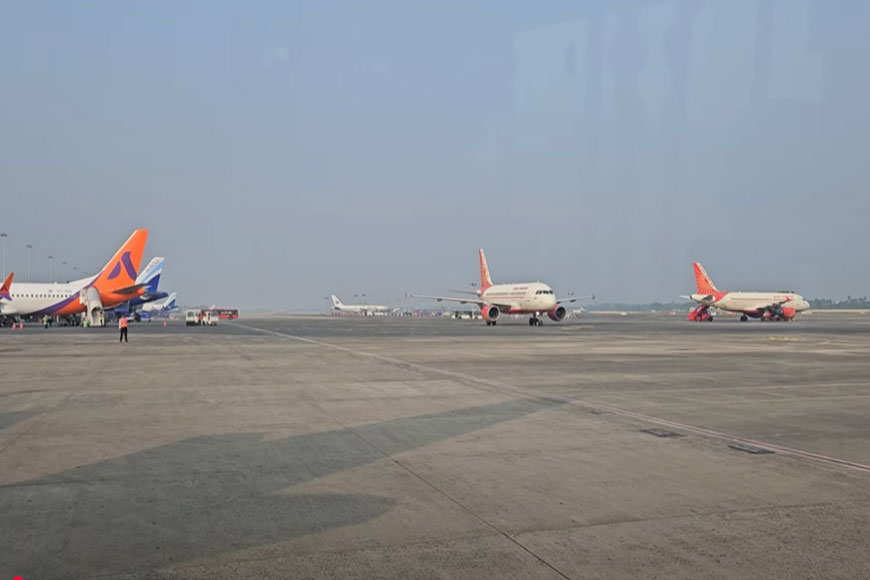Kolkata got its airport 100 years ago, but not its first flight GetBengal story

As we prepare to enter 2025, we also need to take note of an important centenary just past. For it was in 1923 that ‘Calcutta Aerodrome’ was conceived, with the first flights landing here in 1924.
Sadly, the more important centenary actually passed by fairly quietly in 2010, when we ought to have commemorated 100 years of the first recorded aircraft flight in Calcutta, a mere seven years after the world’s first successful testing of a motor-operated aeroplane by the Wright brothers Orville and Wilbur.

So this is as good an opportunity as any to remind ourselves that the first time an aircraft took off from Calcutta was on December 28, 1910. Well not an aircraft, but two aircraft, a Blériot monoplane flown by the Belgian Jules Tyck and a Farman biplane flown by fellow Belgian aviator Baron Pierre de Caters. Both took off from the Tollygunge Club golf course in the presence of at least 15,000 people, as recounted in detail in an article dated November 10, 1912 by the event’s organiser Ernest Esdaile in Flight, the Royal Aero Club’s newsletter.
Incidentally, India’s first recorded aircraft flight dates back to 1911, which would make Tolly Club the host of India’s first unofficial aircraft flight, which nobody seems to talk about much, strangely.
To return to Calcutta Aerodrome, the first British Royal Air Force round-the-world flight landed here in 1924, and the same year, KLM (official airline of the Netherlands) became the first commercial airline to start operations in Calcutta with its Amsterdam-Calcutta-Jakarta flight. In those initial years, Calcutta Aerodrome served primarily as a stopover from Europe and North America to Batavia (as Jakarta was then known) and Australia.
Having begun life as an open field next to the Royal Artillery Armoury in Dum Dum, the aerodrome gradually gained in importance as Sir Stanley Jackson, Governor of Bengal, opened the Bengal Flying Club at the aerodrome in February 1929. In 1930, the airfield was made fit for use throughout the year, and other airlines began coming in. For example, Air Orient began scheduled stops in Calcutta on its Paris-Saigon route, and Imperial Airways began flights from London to Australia via Calcutta in 1933.
As it changed from aerodrome to airport, Calcutta began to draw many more pioneering flights, but the most notable was probably a stopover by the legendary Amelia Earhart on June 17, 1937 during her attempt to become the first woman pilot to circumnavigate the globe. Tragically, Earhart and her navigator Fred Noonan disappeared over the central Pacific Ocean near Howland Island just about a fortnight later on July 2, their bodies never to be recovered.

On June 17, a contemporary report stated: “Amelia Earhart landed her round-the-world plane at DumDum airdrome here today after a 1,350 mile hop across India from Karachi. Miss Earhart took off from Karachi at 7:25 a.m. Karachi time (on June 16). The flyer, who is making a leisurely flight around the world ‘just for fun’, said she intended to take off shortly after dawn Friday (June 18) for Bangkok, capital of Siam. If she adheres to her planned itinerary, she will go from Bangkok to Darwin, Australia by way of Singapore, then Batavia, Dutch East Indies, and Surabaya, Java, before starting across the Pacific.”
During World War II (1939-45), Allied troops and the US Army Air Force set up headquarters in Calcutta and its airport. It was also used as a communications centre for the US Tenth Bombardment Group.
Passenger services grew after World War II, and in 1952, the British Overseas Airways Corporation used the de Havilland Comet, the world’s first jet powered aircraft, on their London-Calcutta route. In 1964, the first domestic Indian jet service was started by Indian Airlines from Delhi to Calcutta.
Between the 1940s and 1960s, Calcutta Airport was served by major airlines such as Aeroflot, Air France, Alitalia, Cathay Pacific, Japan Airlines, Philippine Airlines, KLM, Lufthansa, Pan Am, Qantas, Swissair, and SAS. However, the rapid evolution of aviation technology meant that flights were becoming longer, with fewer stopovers, which meant Calcutta gradually became less important on the global aviation map.

That, coupled with the political and refugee crises of the 1960s and 70s, resulted in fewer and fewer landings until the 1990s, when the airport received a new lease of life and a facelift, thanks largely to the arrival of private Indian carriers such as Jet Airways and Sahara. A new domestic Terminal 2 was opened in 1995, making Terminal 1 the international terminal, and the airport was renamed Netaji Subhas Chandra Bose. In 2000, a new international arrival hall was opened.
On January 20, 2013, the new terminal at Netaji Subhas Chandra Bose International Airport was officially inaugurated by President Pranab Mukherjee, and on March 16, 2013, the old international and domestic terminals were officially shut down once all operations were shifted to the new integrated terminal.
That, in a nutshell, is a history of one of India’s oldest airports. Doubtless, we will see official celebrations launched later in the year, but no harm in launching our own private little celebrations and revisiting this extremely important chapter in India’s aviation history.










